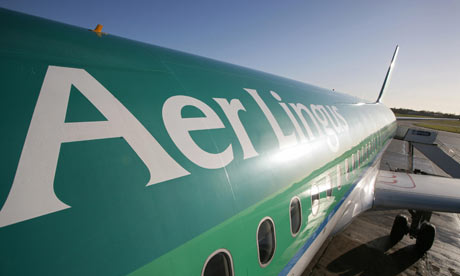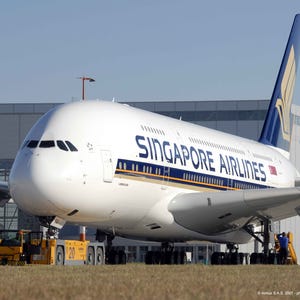American Airlines Group Inc. (NASDAQ: AAL) today reported its first quarter 2015 results.
· Reported record first quarter 2015 net profit of $1.2 billion excluding net special charges, tripling the Company’s first quarter 2014 net profit of $402 million excluding net special credits
· Reported record first quarter 2015 GAAP net profit of $932 million, a $452 million improvement versus the Company’s first quarter 2014 GAAP net profit of $480 million
· Achieved several critical integration milestones during the quarter, including a combined frequent flyer program and recalibration of the schedule at the Company’s hubs at Chicago O’Hare and Dallas/Fort Worth. Also obtained a single operating certificate from the Federal Aviation Administration (FAA) in early April
· Declared a dividend of $0.10 per share to be paid on May 18, 2015, to shareholders of record as of May 4, 2015
Excluding net special charges, American Airlines Group’s first quarter 2015 net profit was a record $1.2 billion, or $1.73 per diluted share. This represents a tripling of the Company’s first quarter 2014 net profit excluding net special credits of $402 million, or $0.54 per diluted share. The Company’s first quarter 2015 pretax margin excluding net special charges was a record 12.7 percent, up 8.6 percentage points from the same period last year.
On a GAAP basis, the Company reported a record net profit of $932 million, or $1.30 per diluted share. This compares to a GAAP net profit of $480 million in the first quarter 2014, or $0.65 per diluted share.
See the accompanying notes in the Financial Tables section of this press release for further explanation, including a reconciliation of GAAP to non-GAAP financial information.
“We are pleased to report record first quarter profits, exceeding the prior record set just last year,” said Doug Parker, American Airlines Group Chairman and CEO. “The credit belongs to our 100,000 team members who are working together to restore American to the greatest airline in the world. We are particularly pleased with the integration achievements our team has realized and look forward to building on those successes through 2015 and beyond.”
Revenue and Cost Comparisons
While core demand remains healthy, first quarter 2015 revenue was impacted by competitive capacity growth, a stronger U.S. dollar and economic softness in Latin America. Total revenue in the first quarter was $9.8 billion, a decrease of 1.7 percent versus the first quarter 2014 on a 0.9 percent decrease in total available seat miles (ASMs). Consolidated passenger revenue per ASM (PRASM) was 13.44 cents, down 1.7 percent versus the first quarter 2014. Consolidated passenger yield was 16.82 cents, down 1.2 percent year-over-year.
Total operating expenses in the first quarter were $8.6 billion, a decrease of 7.1 percent compared to the first quarter 2014 due primarily to a 42.2 percent decrease in consolidated fuel expense. First quarter mainline cost per available seat mile (CASM) was 12.80 cents, down 5.2 percent on a 1.7 percent decrease in mainline ASMs versus the first quarter 2014. Excluding special charges and fuel, mainline CASM was 9.49 cents, up 5.8 percent compared to the first quarter 2014. Regional CASM excluding special charges and fuel was 16.47 cents, down 0.9 percent on a 5.7 percent increase in regional ASMs versus the first quarter 2014.
Liquidity
As of March 31, 2015, the Company had approximately $9.9 billion in total cash and short-term investments, of which $757 million was restricted. The Company also had an undrawn revolving credit facility of $1.8 billion.
Also in the first quarter, the Company returned $260 million to its shareholders through the payment of $70 million in quarterly dividends and the repurchase of $190 million of common stock, or 3.8 million shares, at an average price of $49.47 per share.
Shares repurchased under the buyback program may be made through a variety of methods, which may include open market purchases, privately negotiated transactions, block trades or accelerated share repurchase transactions. Any such repurchases will be made from time to time subject to market and economic conditions, applicable legal requirements and other relevant factors. The program does not obligate the Company to repurchase any specific number of shares or continue a dividend for any fixed period, and may be suspended at any time at the Company's discretion.
The Company also purchased approximately 87,230 shares from its Disputed Claims Reserve at the prevailing market price to satisfy certain tax obligations resulting from the February 10, 2015 distribution.
Approximately $644 million of the Company’s unrestricted cash and short-term investment balance was held in Venezuelan bolivars. This balance includes approximately $621 million valued at 6.3 bolivars to the U.S. dollar and approximately $23 million valued at 12.0 bolivars to the U.S. dollar, with the rate depending on the date the Company submitted its repatriation request to the Venezuelan government. These rates are materially more favorable than the exchange rates currently prevailing for other transactions conducted outside of the Venezuelan government’s currency exchange system. The Company’s cash balance held in Venezuelan bolivars decreased $12 million from the December 31, 2014 balance of $656 million due to payments made in bolivars for local operating expenditures.
During 2014, the Company significantly reduced capacity in the Venezuelan market and is no longer accepting bolivars as payment for airline tickets. The Company is monitoring this situation closely and continues to evaluate its holdings of Venezuelan bolivars for additional foreign currency losses or other accounting adjustments, which could be material, particularly in light of the additional uncertainty posed by the February 2015 changes to the foreign exchange regulations and the continued deterioration of economic conditions in Venezuela. More generally, fluctuations in foreign currencies, including devaluations, cannot be predicted by the Company and can significantly affect the value of its assets located outside the United States. These conditions, as well as any further delays, devaluations or imposition of more stringent repatriation restrictions, may materially adversely affect the Company’s business, results of operations and financial condition.
Notable Accomplishments
Merger Accomplishments
· Merged frequent flyer programs by moving US Airways Dividend Miles members into AAdvantage®
· In April, received a single operating certificate from the FAA which allows the airline to operate under one certificate
· Achieved a ratified 5-year contract with the carrier’s 15,000 pilots that provides industry leading pay rates
· Optimized the Company’s flight schedule at Chicago O’Hare International Airport and Dallas/Fort Worth International Airport
· Co-located operations at eight more airports across its network, bringing the total number of co-locations to 114
Finance Accomplishments
· Completed a $500 million unsecured bond offering priced at 4.625% and a $1.2 billion enhanced equipment trust certificate (EETC) issue priced at a blended rate of 3.425%. In addition, in April the Company refinanced its $750 million 2014 slot, gate and route term loan at lower interest rates and improved collateral terms
· On March 20, the Company was added to the S&P 500 index
Marketing, Network and Fleet Accomplishments
· Took delivery of the first two Boeing 787 Dreamliners, which will enter domestic service in May 2015, and begin flying internationally in June 2015. Also, as part of its ongoing fleet renewal program, the Company took delivery of 18 new mainline aircraft, and retired its last Boeing 767-200
· Signed a codeshare agreement with Korean Air to place its code on American flights between Dallas/Fort Worth International Airport and Seoul, South Korea
· Became the official airline partner of the Los Angeles Clippers and was named the official airline of the Chicago Cubs and Wrigley Field
Community Relations Accomplishments
· Commemorated an historic day for the Civil Rights movement by operating a charter aircraft from Washington, D.C., to Montgomery, Ala. for the 50th anniversary of the March on Selma
· Launched Fuel Smart, a company-wide fuel saving program to reduce usage of aircraft auxiliary power units when jets are parked on the ground; a portion of the savings generated by this reduced usage will benefit Air Compassion for Veterans, a nonprofit organization providing air transportation to injured veterans and active duty military traveling for medical, rehabilitation, or other veteran-related purposes
· Celebrated 30 Medal of Honor recipients by operating a charter flight from New York to Washington so those recipients could participate in National Medal of Honor festivities
Special Items
In the first quarter, the Company recognized $311 million in net special charges, including:
· $223 million in merger related integration expenses, including $216 million in mainline special charges and $7 million in regional special charges
· $99 million in charges relating to the Company’s new pilot joint collective bargaining agreement
· $6 million in net credits for bankruptcy related items, principally consisting of fair value adjustments for bankruptcy settlement obligations
· $8 million non-operating net special credits comprised of a $17 million early debt extinguishment gain on the repayment of American’s AAdvantage® loan with Citibank, offset in part by a $9 million charge related to the prepayment of certain aircraft financings
· $9 million in tax special charges related to certain indefinite-lived intangible assets
Conference Call / Webcast Details
The Company will conduct a live audio webcast of its earnings call today at 7:30 a.m. CT, which will be available to the public on a listen-only basis at aa.com/investorrelations. An archive of the webcast will be available on the website through May 24.
Investor Guidance
For financial forecasting detail, please refer to the Company’s investor relations update, to be filed with the Securities and Exchange Commission on Form 8-K immediately following its 7:30 a.m. CT conference call. This filing will be available ataa.com/investorrelations.
About American Airlines Group
American Airlines Group (NASDAQ: AAL) is the holding company for American Airlines and US Airways. Together with regional partners, operating as American Eagle and US Airways Express, the airlines operate an average of nearly 6,700 flights per day to nearly 350 destinations in more than 50 countries from its hubs in Charlotte, Chicago, Dallas/Fort Worth, Los Angeles, Miami, New York, Philadelphia, Phoenix and Washington, D.C. The American Airlines AAdvantage®program allows members to earn miles for travel, vacation packages, car rentals, hotel stays and everyday purchases. Members can redeem miles for tickets as well as upgrades to First Class and Business Class, vacation packages, car rentals, hotel stays and retail products. American is a founding member of the oneworld alliance, whose members and members-elect serve nearly 1,000 destinations with 14,250 daily flights to 150 countries. Connect with American on Twitter @AmericanAir and at Facebook.com/AmericanAirlines









